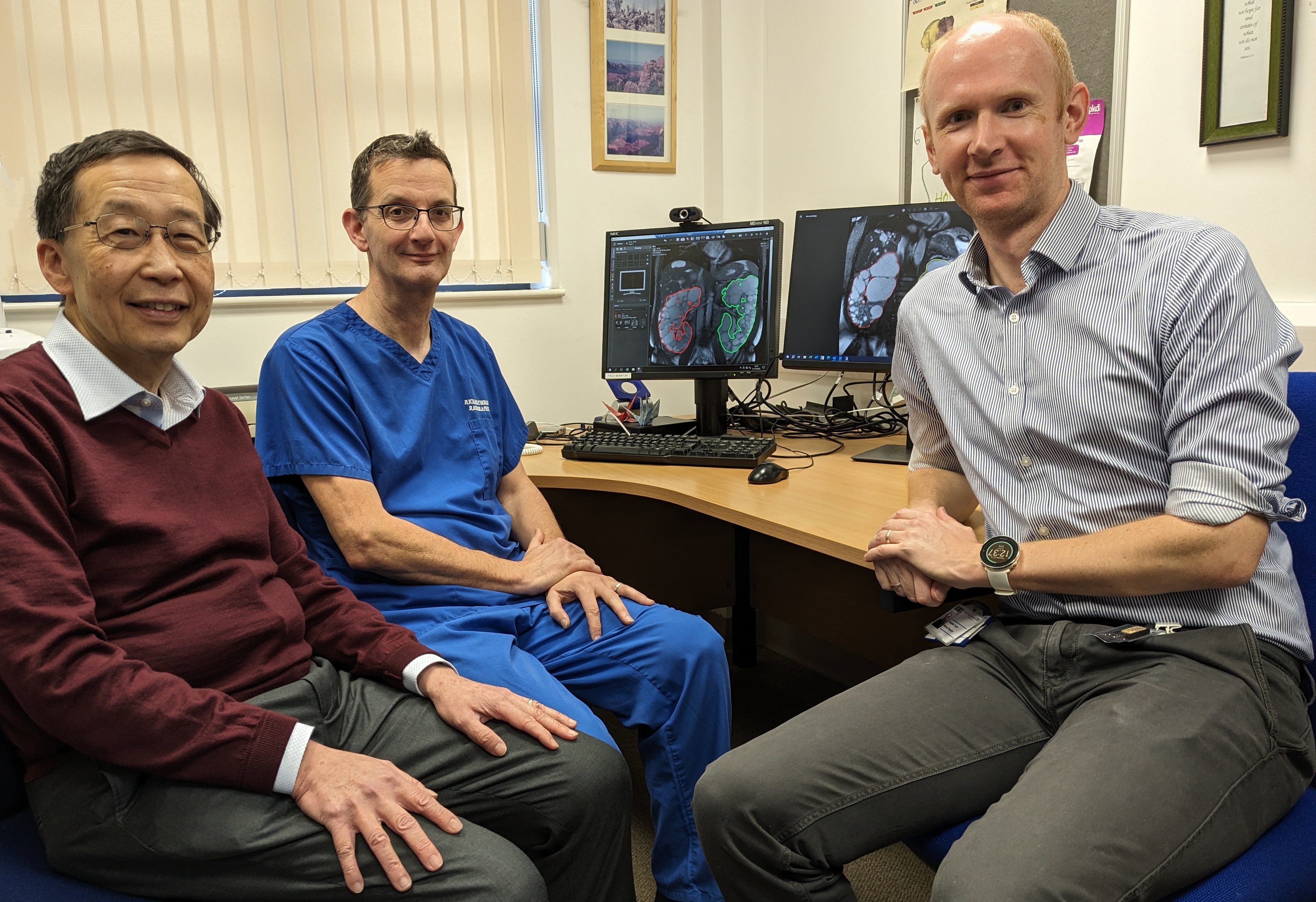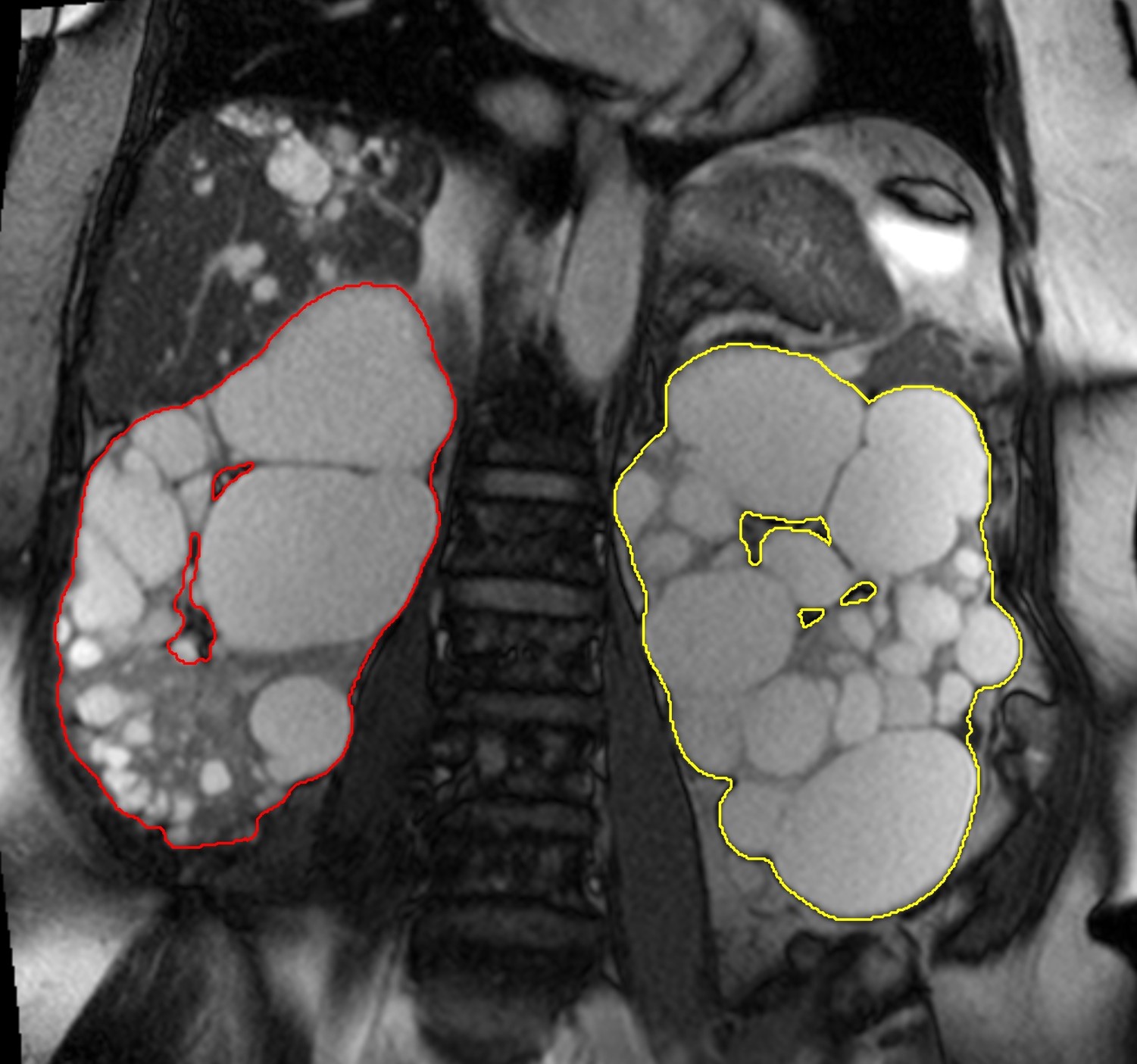
AI Measures Kidney Size 6 Times Faster than Humans
Artificial intelligence (AI) once felt like it had a home only in science fiction stories, but there’s no doubt it’s now becoming an integral part of our world. The potential threats and opportunities of AI to our future made multiple headlines in 2023. Yet this powerful technology can provide us with many benefits, from improved healthcare, to safer cars and workplaces, to better products and services.1
In this blog, we hear from two researchers from Sheffield Teaching Hospitals NHS Foundation Trust: Dr Jonathan Taylor, Senior Medical Physicist, and Professor Albert Ong, Consultant Nephrologist and Clinical Lead for Genetics. Albert is also Professor of Renal Medicine at the University of Sheffield. They worked with others across Europe to develop an AI program to accurately measure kidney size.2
These measurements are important in PKD because they help to predict when a person’s kidneys might fail.
Professor Ong tells us, “Our AI tool performed as well as the human expert analysts and did the job approximately 6–7 times faster”.
The AI program is now being used in the clinic.

Consultant Nephrologist and Clinical Lead for Genetics Professor Albert Ong, Principal Clinical Scientist Dr Jonathan Taylor and MRI Radiographer Richard Thomas (from left to right). Image Courtesy of Sheffield Teaching Hospitals NHS Foundation Trust.
We hear first from Dr Taylor, who was involved in designing and testing the AI tool…
What made the ‘old’ process for measuring kidneys so labour intensive?
MRI scans give a 3-dimensional view of the kidney. Scans are made up of lots of 2-dimensional ‘slices’ stacked on top of each other, about 50–60 in total. To measure total kidney volume an operator would previously have to go through, slice-by-slice, and carefully trace round the edge of each kidney on a computer screen.
What made you think to use AI to measure kidney size?
AI tools are very good at recognising objects in images. I was fairly confident that we could train a tool to recognise and trace round kidneys in abdominal images.
How is AI different to a computer program?
AI is a type of software that can be used in many different types of computer programs. It’s different to conventional software in that it learns how to do predictions from large collections of data. In our case the AI software is embedded within our standard hospital computer systems and makes predictions about where the kidney is located in MRI images.
How did you design the AI system?
We used a large collection of kidney MRI images from a previous European PKD clinical study called CYSTic. Our radiographer colleague Richard Thomas manually traced round the kidneys in all images. We then fed this collection of images and kidney tracings to an AI algorithm until it had learned to do the tracing process itself to a high standard.
How accurate is AI at estimating kidney size versus real people?
The AI tool is very good at identifying the boundaries of kidneys in MRI images and therefore measuring total kidney volume. It has a high degree of accuracy and is comparable to decision-making performed by trained workers. In the vast majority of cases, the AI tool results need either no corrections or very minor corrections by a human operator.

A 2-dimensional MRI image of the abdomen, with the outline of the two kidneys traced in red and yellow. This is an example of a single ‘slice’ of the MRI scan. Image Courtesy of Sheffield Teaching Hospitals NHS Foundation Trust.
How quickly can AI measure a kidney?
The AI result is typically available in less than 1 minute. It happens automatically as soon as the MRI scan is sent from the scanner. A human operator will then check the results. The total time is now less than 10 minutes on average. Each case would previously take about 1 hour to process manually.
Can the AI system be used to measure liver size too?
The AI software doesn’t currently work for livers but it’s definitely possible. This is the next stage of our work.
Professor Ong explains how the AI tool is being used in kidney care…
Will you now be using this AI in your clinic?
The tool has already been used since 2022 in the 3D lab at Sheffield Teaching Hospitals which performs all the clinical kidney volume measurements. It has already resulted in significant time savings and the analysts like using it!
Do you think kidney clinics worldwide will start using AI too?
This tool (and others like it) will enable kidney clinics worldwide to measure kidney volume quickly and accurately. It will make the measurement of kidney volume possible at clinics where there is a lack of specialist expertise. We plan to share our tool openly to allow it to be used around the world.
How will you use the time saved?
The time savings made by the laboratory allow them to do more measurements and also reduce the cost of analysis.
Because AI is quicker, does it mean patients can have their kidney size checked more often?
That would be possible. However, we envisage that a single measurement for an individual (occasionally repeated) will provide sufficient information to predict future kidney lifespan.
References
- European Parliament. Artificial Intelligence: Threats and Opportunities. 20 June 2023.
- Taylor J, Thomas R, Metherall P, et al. An Artificial Intelligence Generated Automated Algorithm to Measure Total Kidney Volume in ADPKD. Kidney International Reports. https://doi.org/10.1016/j.ekir.2023.10.029
Research partly funded by the PKD Charity, Sheffield Hospitals Charity, and the Sheffield Kidney Research Foundation.
ADPKD, Research, Grants awarded, PKD
- Hits: 6216
